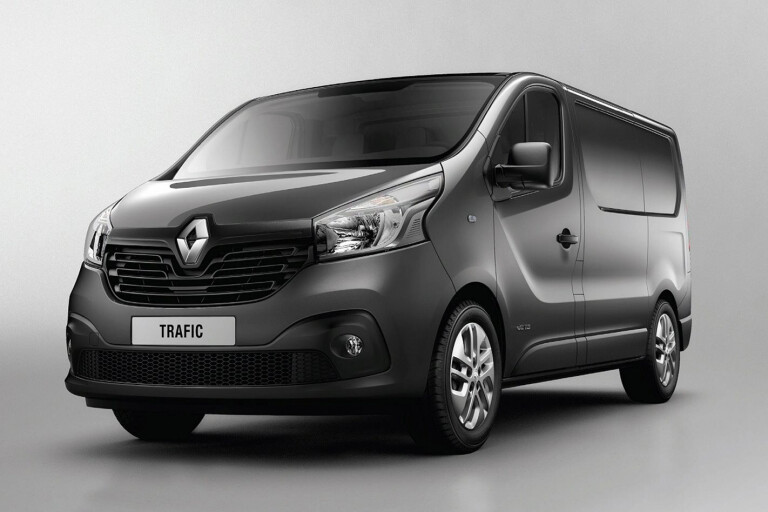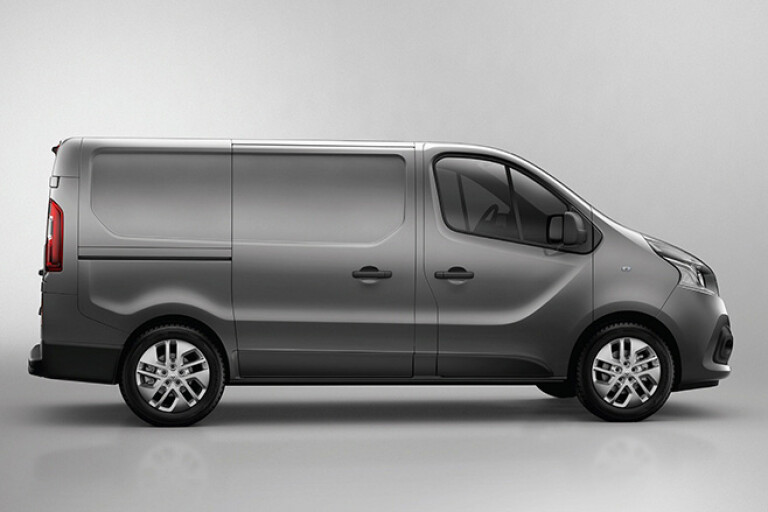
1. The Renault Trafic has been wearing the market leader mantle as the top selling mid-sized commercial in Europe for over 17 years. It currently holds a 15 percent slice of the European LCV pie.
2. The longer you have the keys to a Trafic the more cubbyhole storage you find. A flap in the steel bulkhead lifts up allowing long articles to be poked through under the passenger seats from the load area. The passenger seats also flip forward to reveal another out of the way storage area. It can make finding your sunglasses somewhat of a challenge at times.
3. The wheel and stripe package of the Sport are reportedly homage to Renault’s Formula One successes. Silver body highlights, side steps and metallic paint are all an effort to make the load-lugger less box-on-wheels and a little more sporty. Renault Australia is unsure as to whether the stripes will make it down under due to our harsh sunshine.

4. This LCV platform was developed in conjunction with GM, though the Renault-Nissan Alliance sees Trafic manufactured at the Renault’s Sandouville factory in France along with a Nissan badged version called the NV300. The same platform is also manufactured in the UK by Vauxhall and sold under the Vivaro name. Opel variants for Western Europe are also manufactured at GM’s Luton UK plant. Not to be left out of the action FIAT also use the Trafic/Vivaro platform as the basis for its Talento van.
5. Flipping down the passenger sun visor of the Trafic Sport can be a disturbing experience. A convex blind spot mirror for looking down the left hand side of the van from the driver’s seat comes in handy. But the passenger gets a grotesque distortion of their own face reflected back at them.
6. Renault’s 1.6-litre common-rail turbo-diesel engine is a perfect example of the global engine down-sizing trend. This engine is nearly half the size of the market leading Toyota HiAce’s 3-litre engine yet puts out more power.
7. Twin-turbocharging is often called Bi-Turbo. In the case of the Trafic it’s really sequential turbocharging where a smaller turbo provides boost lower in the rev range, while a larger turbo kicks in as more oomph is needed. This prevents turbo lag at low speeds.
COMMENTS